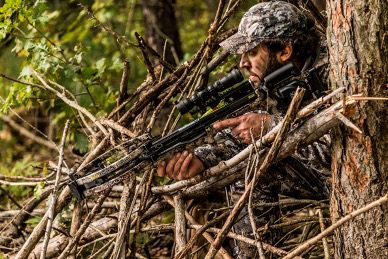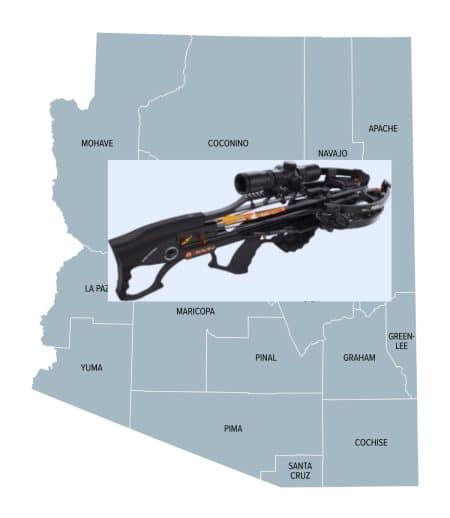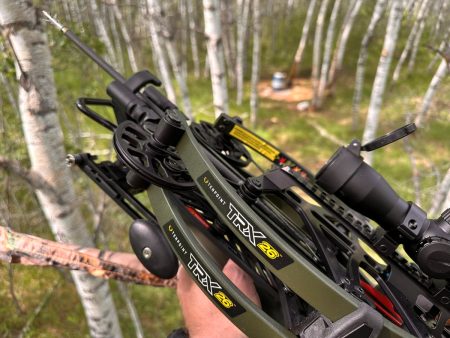It was the place where I went on my first hunt with my father. It was a 200-acre section of large timber with a few small fields. I remember how as I child, I stumbled along trying to keep up with my father. We had walked down the clear wooded road leading to a knee-high fescue field with a beautiful pond in the corner.
Even though that was 35 years ago, I still remember what everything looked like. I can visually recall many hunts we encountered on the large patch of timber set within walking distance and across the road from where I lived as a kid.
Sadly, what I remember the most about the epic chunk of hunting land across from my childhood home was the day two semi-trucks unloaded logging machinery near the entryway. I was devastated every day for several months as load after load of large oak logs was hauled away. To us then, that meant we’d never get to have another treestand in them again. My father, brother, and I felt like we would probably never experience another deer hunt there again.
That was the case until a year or two after the massive clear-cut logging project was completed. That’s when we encountered even more deer on that logged property than before any trees were cut. Could the clear-cutting have helped our deer hunting? Heck, yes! Even today, the farm lots near my home where I spend most of my time hunting is massive. They had been clear-cut five or six years ago and are now thriving with deer, and are also home to several mature bucks.
What Is Clear-Cut Timber?
As a teenager, I learned the reasons for clear-cutting large chunks of land like that parcel on the farm near our home. The most common reason for cutting large amounts of timber is for money. A local sawmill owner was known for cutting hardwood that would later be used as railroad ties. They were also used as beautiful clear-oak lumber that was made into hardwood flooring.
Timber buyers, such as the one that purchased and logged the land near my childhood home, often buy large sections of land having large numbers of mature trees. They then cut all the trees that are large enough to make a log, then sell or use the logs in sawmills to make many kinds of wood materials. They plan to make enough money from the logs they cut to pay for the land, then sell the clear-cut land for a lower price to help increase their profits. After the logging is complete, the land is typically called clear-cut timber.
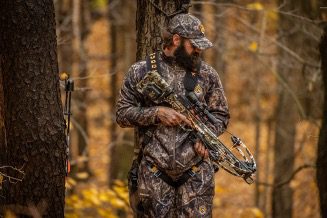
Advantages for Deer and Deer Hunters
Within a few months after a large area of land has been clear-cut, massive amounts of forage grow. That comes from plants having extra sunlight and less competition from the trees absorbing all the nutrients in the ground.
An overgrown clear-cut is often referred to as a wooded food plot. This may not be a large open area full of grass like most food plots. However, an overgrown clear-cut area will pound-for-pound exceed the amount of food it produces for wildlife like Whitetail deer. Clear-cuts are full of native food sources that change with the progression of the seasons. Early in spring and summer, sources such as greenbrier, pokeberry and small oak saplings fill the ground under the canopy that formerly held fallen leaves. This turns into a lush space of greenery, native browse and other vegetation that deer love. As the seasons change from warm weather to cooler fall and winter seasons, the types of native food available change, too. Whatever food is available, one thing is sure: the number of deer that live, feed and use these highly coveted areas for bedding and travel routes will increase. Most folks would consider a clear-cut timber area as ruining their chances of hunting. Often, it becomes a hunter’s favorite area for hunting with crossbows.
Approaching Cut-Timber Areas
There are many reasons hunters assume that hunting an area after it has been logged is not going to be as successful. One of those factors is the perceived difficulty of moving and seeing through brushy, new growth. Another is the area’s remains of fallen trees. Occasionally, hunters find that locating a tree large enough to hold a treestand safely is much more difficult in previously cleared areas. They may settle on any tree that is large enough and later discover that deer can easily spot them. Or their stand may be in the wrong location to get within close range of deer as they pass through.
Many hunters use old logging roads and decks as a foundation for a new food plot to be sure they are hunting in the proper location. Planting small food plots amid the thick, overgrown forage creates an ideal location for deer to bed and feed without having to move far away. Small food plots also provide excellent locations to place ground blinds or an elevated tripod blind to get within crossbow range of deer.
Another advantage of thick, overgrown clear-cut areas is how deer adapt their travel routes. They work to stay more concealed when moving from food sources to water or from bedding areas to food. Just as old logging roads can benefit hunters making new food plots, deer can use them to create easier travel routes. Deer can travel, bed or even use overgrown precise cuts as a staging area. They can go there before entering a prominent, open food source spot in the early mornings or late evenings. Most clear-cut spaces are challenging to hunt from the inside or from the middle of the thickest cover. Generally, hunters must hunt the edges to avoid spooking deer who are bedding or staging in thick cover. Mature bucks often wait until late evenings at last light before venturing into the open. It’s also common for deer to enter these areas at first light to get back to their bedding area before sunrise.
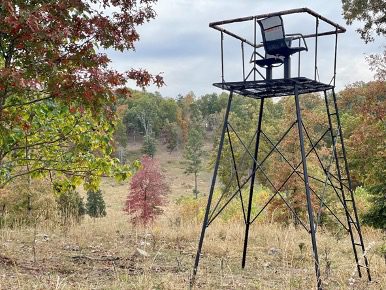
Using a Tripod
When hunters need to get close to thick, clear-cut areas yet not be so close as to cause deer to leave, they can use a tripod-style stand such as the Muddy Outdoors 12’ Quad Pod. The Quad Pod can be hunted in areas without securing it to a tree. The 12’ tripod elevates the hunter above thick areas to provide a better vantage point. It also allows them to place a stand in ideal locations to maximize shot opportunities.
Using ground blinds or elevated tripod-style stands to get hunters into archery range of deer is an ideal tactic for bowhunters who hunt clear-cut areas. However, it’s vital to use caution when walking to and from a stand site. Hunters should never cross a clearcut when going to their stand or blind. Instead, use log roads or adjacent open timber areas when walking in. That helps you avoid spooking deer out of the cover before the hunt even begins.
Paying attention to wind direction is also essential for approaching a stand site. Avoid having the stand site or clear-cut areas downwind when walking in. That helps you avoid having human scent spook deer before the hunt begins.
Rather than losing faith in hunting land that has been logged or clear-cut, embrace the opportunities that have been provided: deer with better nutrition, cover and overall habitat. Never assume that mature bucks are hiding in the thicker cover, unreachable. Instead, go in after them.
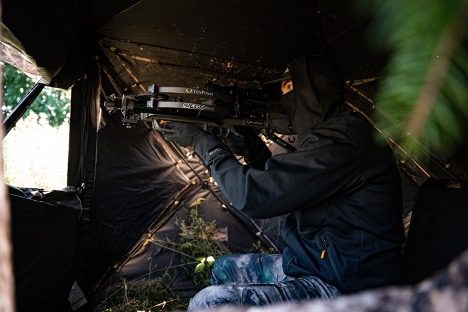
Per our affiliate disclosure, we may earn revenue from the products available on this page. To learn more about how we test gear, click here.

